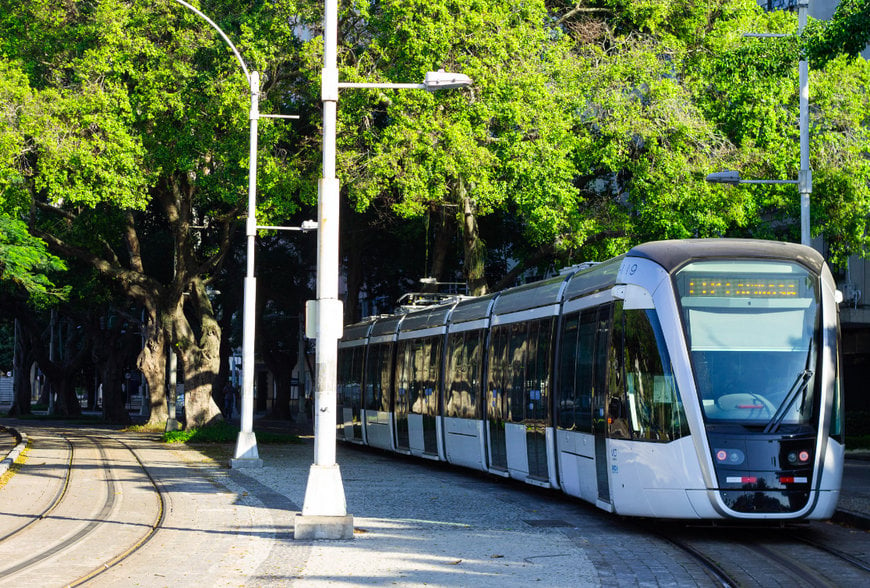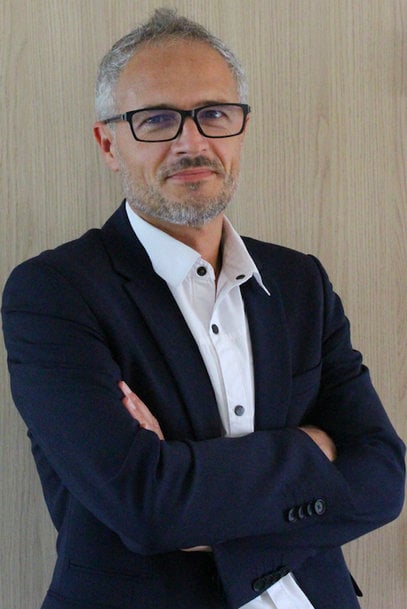railway-international.com
01
'23
Written on Modified on
The new challenge of intermodality is connecting trains with other modes of transport
French government and local authorities consider public transport a key driver of energy and climate change. Intelligent Transport Systems can encourage people to take railways over other modes.

How Intelligent Transport Systems are transforming rail transport?
Trains may be a major ally in our fight against climate change. But in the daily lives of commuters, their fiercest "rivals" are always standing in their way: cars! So, how do you attract and retain increasingly demanding passengers? What means should we employ and what benefits should we promote to encourage users to abandon their cars and take the train instead? Intelligent Transport Systems can provide an answer to these questions, by improving the quality of service and guaranteeing an increasingly pleasant travel experience.
A high-quality transport service must always be provided, even in unforeseen circumstances. The NAVINEO Rail solution offers rail operators all the features they need to manage both the traffic and the transport service (train monitoring and regulation actions in the event of disruption) and adjust them in real-time according to unforeseen train traffic. For example, in the event of planned or unplanned disruptions to their rail service on a particular section of a line, the operator can provide an alternative bus service on that section while also continuing to run the same rail service either side of the disrupted section.
NAVINEO Rail also embarks innovating technologies onboard the train to improve travel experience. For instance, the widespread use of CCTV on trains gives passengers peace of mind on their journey, since operators can make sure they feel totally comfortable on board.
In the event of an incident, the passenger can speak through an intercom service, directly to the driver, to a member of the train crew, or to the Central Control Centre, with the CCTV footage ensuring a more accurate assessment and a better management of the situation. Similarly, new applications are emerging in the railway sector based on to the processing of video streams by Artificial Intelligence algorithms: Automatic Incident Detection (AID) solutions for abandoned luggage or smoke are already being deployed on trains.

In the event of disruption, reliable information on the status of the transport service is provided to passengers in real time, as well as alternative solutions proposed by the operator. Through automatic passenger counting, transport authorities can analyse counting data to adjust their transport offer according to passenger flows, and, in turn, facilitate commuting. It is also a valuable tool during pandemics, reducing passenger density in particular areas of trains and platforms in real time.
All in a whole, thanks to NAVINEO Rail, operators, infrastructure managers and transport authorities have a modular system at their fingertips, dedicated to revitalising the rail transport offer on a national scale.
How are these innovations being developed on the ground?
For more than 40 years, NAVINEO, an Equans France offering, has been designing, developing, deploying and maintaining smart multimodal transport systems and services to operate various modes of transport (bus, tram, shuttles, coaches and bicycles), at various local and regional levels (the Oise department or the Normandy region, for example). The challenge for transport authorities now lies in offering people an attractive transport service that lures them away from their private cars.
With the launch of its newest service, NAVINEO Rail, NAVINEO has added heavyrail to its range of services, now providing an extended multimodal offer that would probably be best described as "ultramodal"!
And railway operators are already benefiting from this service, with Transdev, for example, experimenting daily with the intermodal capabilities of NAVINEO Rail in the Grand Est region of France. Soléa is currently deploying the same tool to operate buses and trams in the Mulhouse area, as well as to jointly operate the Mulhouse-Thann railway line with SNCF Réseau.
On the tangential lines in the Île de France region, which are heavily used at peak times, tram-train services can be modified in real time via automatic route requests sent to the signalling system. These advanced features, which make intermodality reliable for travellers, are supplemented by strong project management services, technical training, change management support, system maintenance, cyber security, obsolescence management, and even CSR and Green IT commitments.
What prospects are there for the future?
The current outlook is very positive. There is no doubt that the rail market is booming, supported worldwide by investments in the energy transition. This is particularly the case in France, where certain regional TER lines have been opened up to competition. It is also clear for all to see that new operating approaches are currently being considered and that new players will emerge. We must therefore profoundly change the way we organise transport in general, eventually creating intermodal regions that benefit both travellers and the planet!
Industrial partners must adapt to technical and technological developments to ensure the sustainability of investments made by public authorities. Convinced of the need to help revitalising the railway sector, Equans France is strengthening its commitment to transport authorities with innovative solutions, allowing us to meet the challenges of a three-prongued transition - energy, industry and digital - together.
www.equans.com

